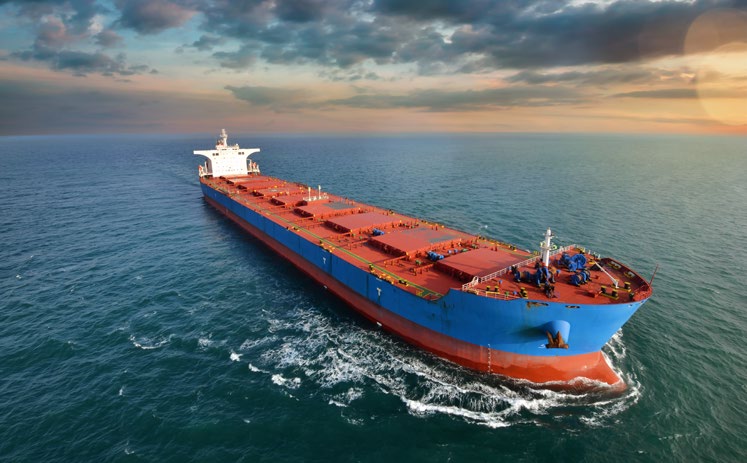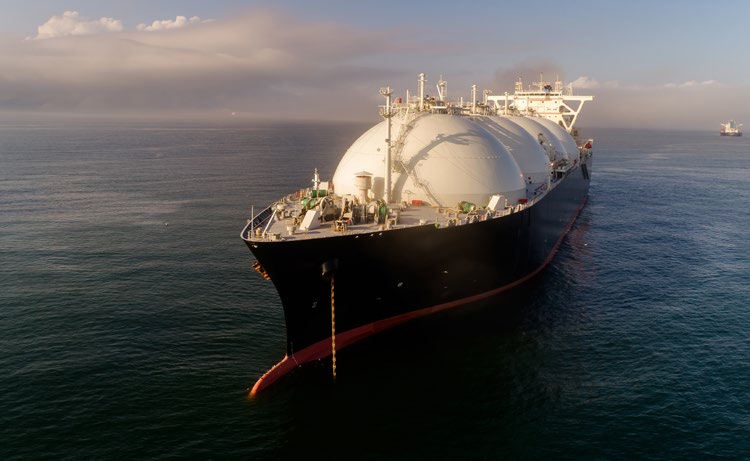ICRAR’s big data experts and UWA Oceans Institute oceanographers have joined forces to improve wave forecasts off the WA coast. The project has already boosted weather predictions at Barrow Island, and could one day lead to more accurate forecasts for surfers, recreational boaters and industry.

ICRAR data intensive astronomer Kevin Vinsen is no stranger to waves. The machine learning expert models gravitational waves— ‘ripples’ in space-time caused by some of the most violent and energetic processes in the Universe. But it took UWA Oceans Institute oceanographer Dr Jeff Hansen to persuade him to study waves he could actually see.
Mr Vinsen and Dr Hansen are part of a team working to improve marine forecasting off the WA coast. In collaboration with the Bureau of Meteorology, they have been looking to improve wave predictions for a port facility at Barrow Island, where big swells can cause havoc with LNG shipments.
Dr Hansen said wave predictions around the world rely on decades-old models that don’t consider individual waves. “While providing robust and reliable forecasts, the models can be prone to consistent biases and errors,” he said. “The idea that I had was to see if we can use machine learning to identify these consistent errors and correct them.”
To improve the model, Dr Hansen gathered two and a half years of wave, wind and tidal forecasts from the Bureau of Meteorology, along with historical observations from wave buoys off Barrow Island.
“Early results suggest the research has improved the accuracy of wave height forecasts by between ten and twenty per cent.”
Mr Vinsen then used machine learning to bridge the gap between the forecast conditions and those actually experienced at the island. Drawing on his experience managing huge data sets for astronomy, he used the data to ‘train’ the computer to predict the actual conditions off the island.
“We divided the weather data by month and fed it into four machine learning systems, all with completely different methodologies”

Mr Vinsen said. “Having four systems learning independently from the same data was a way to increase the reliability of our results.”
Early results suggest the research has improved the accuracy of wave height forecasts by between ten and twenty per cent. “That might not sound like a lot, but there are big financial incentives for even small, incremental gains,” Dr Hansen said. “If it helps get one more ship in a year, it’s already paid for itself many times over.”
“If the forecast is off, companies can miss an opportunity to load a ship… Each ship carries tens of millions of dollars’ worth of gas, so missing just a few shipments a year adds up to a lot.”
Dr Jeff Hansen
UWA Oceans Institute
LNG offloads must be scheduled for when conditions are calm. “If the forecast is off, companies can miss an opportunity to load a ship when they could have,” Dr Hansen said. “Or they can get caught out, where a carrier is tied up and the weather gets bad. Big swells can cause ships to break mooring lines or crush parts of the dock, and generally make the job a lot more dangerous.”
And bulk carriers run on such tight schedules that if the ship can’t get in and load up within a few days, it’ll leave for the next job. “None of the operators have very much storage, so if they miss an offload they could have to shut down,” Dr Hansen said. “Each ship carries tens of millions of dollars’ worth of gas, so missing just a few shipments a year adds up to a lot.”
Mr Vinsen and Dr Hansen are keen to get their hands on near real-time weather data, including barometric pressure, wind and swell changes. “Then if we see something changing that we’ve seen before, the model will be able to adapt quickly,” Mr Vinsen says. The team is also looking to introduce more physics, going from a 1D to 2D spectra.
Their methods could be applied to data from other regions, resulting in more accurate wave forecasts for surfers, recreational boaters and marine industries all over the world.
For Mr Vinsen, the spectral techniques he uses to study wave height in the Indian Ocean are ultimately not that different from those use to model gravitational waves in space. “It’s just that waves in the ocean are travelling at tens of metres a second rather than the speed of light,” he says.